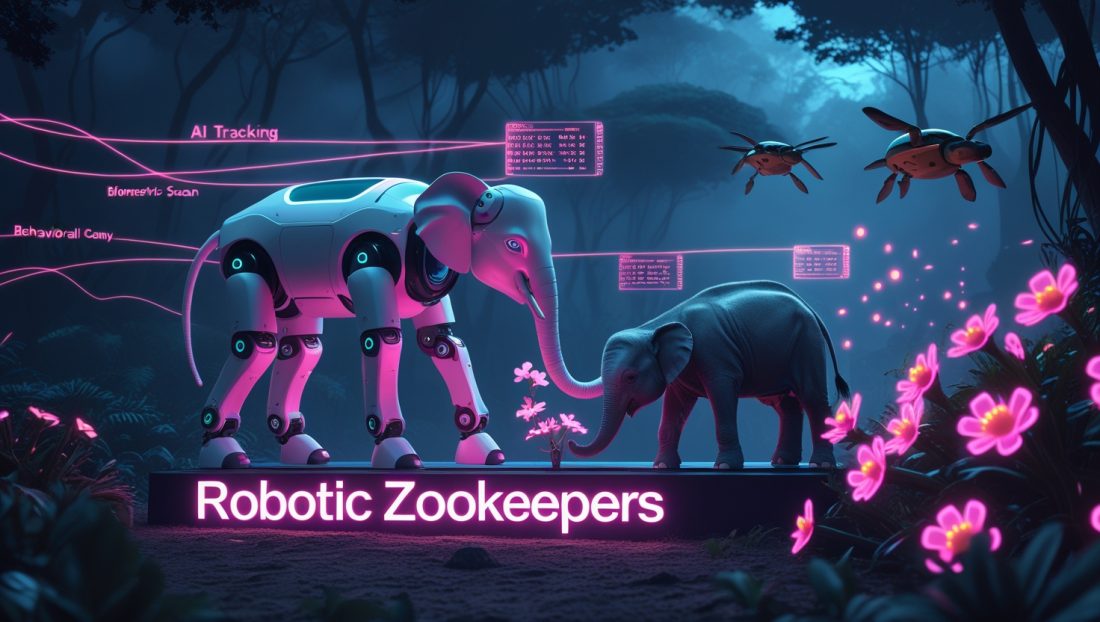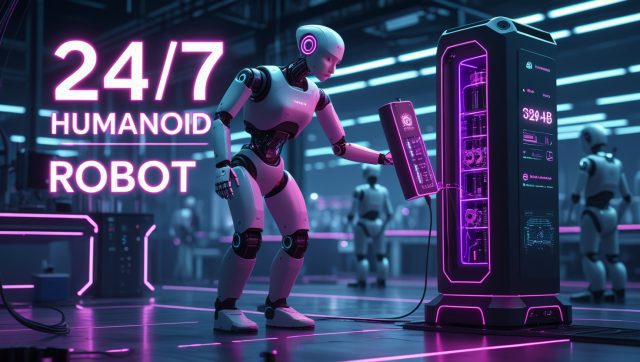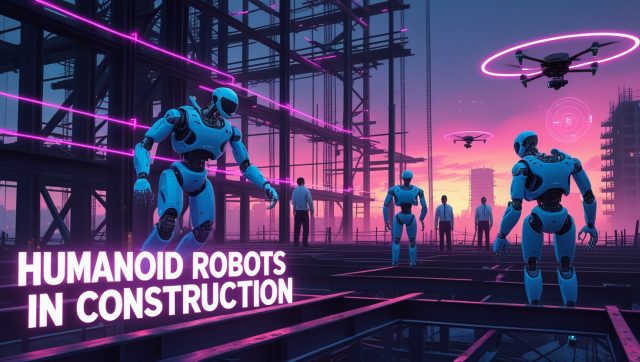A Race Against Extinction
What if Robotic Zookeepers could save endangered species from extinction? In 2025, this question is no longer hypothetical. With over 1 million species threatened by human activity and climate change, conservationists are turning to artificial intelligence, robotics, and genetic engineering to rewrite the future of life on Earth. This article explores how Robotic Zookeepers—once a sci-fi fantasy—are now monitoring rainforests, rehabilitating coral reefs, and even cloning near-extinct animals.
But this transformation isn’t without controversy. Critics argue that technology risks overshadowing grassroots conservation efforts or prioritizing “charismatic” species like rhinos over less glamorous ones like insects. Others question whether Robotic Zookeepers can truly replicate the intricate balance of natural ecosystems. Let’s unpack these debates, spotlight groundbreaking projects, and examine why the fusion of tech and ecology might be our last, best hope for preserving biodiversity.
The Rise of Robotic Zookeepers: Merging Silicon with Soil
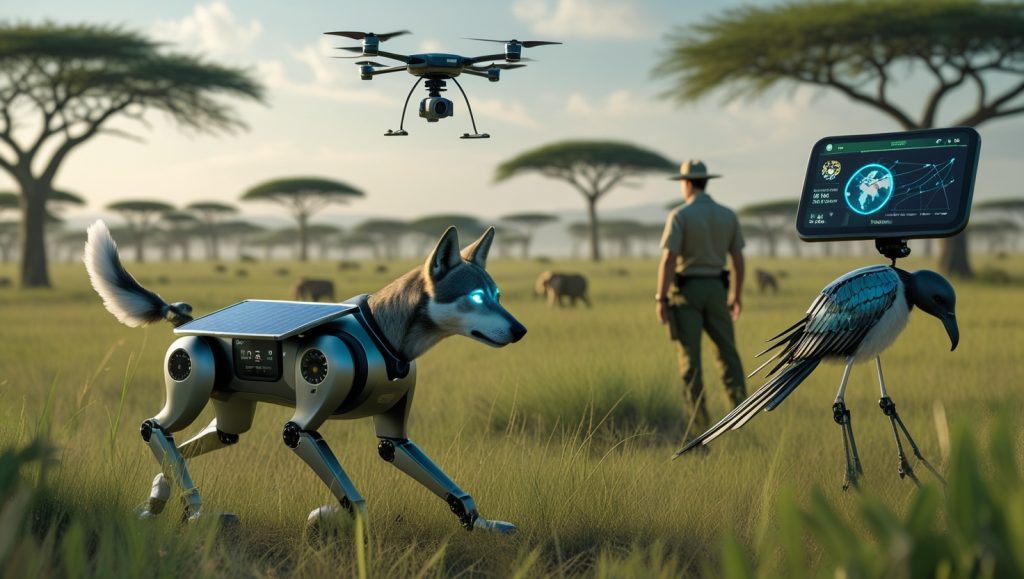
The term “Robotic Zookeepers” might conjure images of humanoid machines feeding lions, but the reality is far more nuanced. These systems range from autonomous drones patrolling protected areas to biohybrid robots mimicking endangered animals. Their shared goal? To address conservation challenges at a scale and speed humans alone cannot achieve.
Why Traditional Methods Are Falling Short
Habitat destruction, poaching, and climate change are outpacing conventional conservation strategies. For example:
- Poaching: Despite decades of anti-poaching patrols, rhino populations have plummeted by 70% since 1970.
- Deforestation: The Amazon lost 13,235 square kilometers of forest in 2024 alone—equivalent to 2.3 million football fields.
- Pollinator Collapse: Over 40% of insect pollinators face extinction, threatening global food security.
Robotic Zookeepers aim to bridge these gaps. Take NEO, the solar-powered robotic dog developed by NextNature. Originally designed as a low-impact companion for urban dwellers, NEO’s AI has been repurposed to monitor wolf packs in Yellowstone, tracking their movements without disturbing natural behaviors. Meanwhile, Kenya’s WildDrone project uses silent, camera-equipped drones to map elephant migration corridors disrupted by human settlements.
Key Innovation:
“Robotic Zookeepers don’t replace rangers—they amplify their impact. A single drone can survey 100 square miles in a day, something that would take a team weeks on foot.”
—Dr. Paula Kahumbu, CEO of WildlifeDirect.
Applications of Robotic Zookeepers: From Labs to Jungles
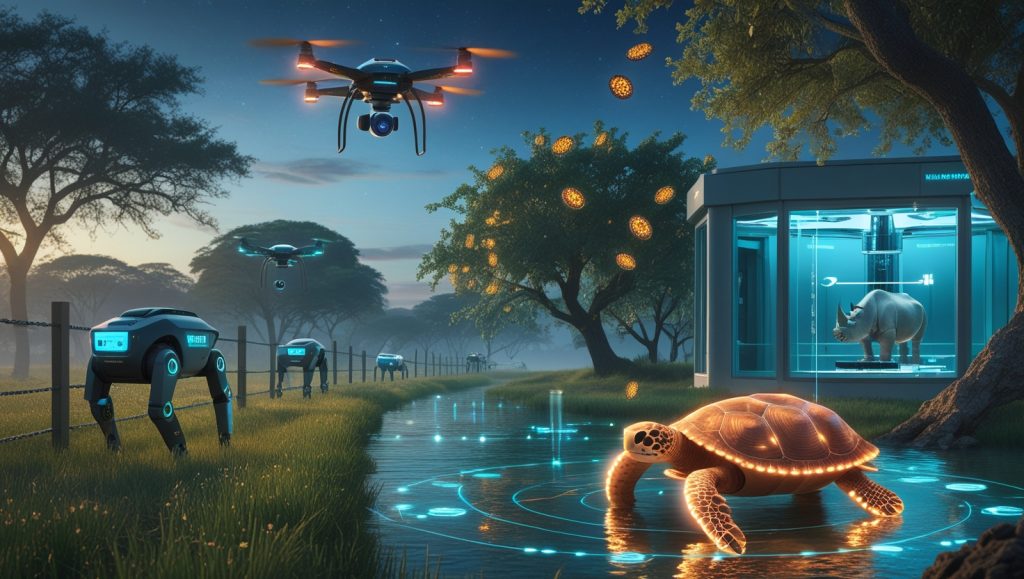
1. AI-Powered Surveillance: The Silent Guardians of the Wild
In South Africa’s Kruger National Park, thermal-imaging drones equipped with machine learning algorithms now detect poachers in real time. These Robotic Zookeepers, developed in partnership with the University of Southern California, analyze heat signatures to distinguish between humans and animals, alerting rangers via encrypted channels. Early trials in 2024 reduced poaching incidents by 58% in test zones.
Case Study: The Ol Pejeta Conservancy
Ol Pejeta, home to the last two northern white rhinos, employs a layered defense system:
- Ground Robots: Four-legged “Spot” robots by Boston Dynamics patrol fences nightly, scanning for breaches.
- Aerial Drones: Fixed-wing drones map rhino movements, syncing data with the conservancy’s AI dashboard.
- Biometric Sensors: Subdermal chips in rhinos transmit health data to veterinarians, flagging illnesses early.
Imagine a ranger named Amina in Kenya’s Maasai Mara. For years, she tracked poachers through dense brush, risking her life. Today, her team deploys Robotic Zookeepers that pinpoint poacher camps using AI, allowing arrests without direct confrontation. “It’s safer for everyone—even the animals,” she says.
These Robotic Zookeepers are transforming anti-poaching efforts beyond Kruger and Ol Pejeta. In India’s Kaziranga National Park, AI-driven drones now monitor one-horned rhinos, reducing poaching by 45% since 2023. These systems integrate with global conservation networks, sharing data to predict poacher movements across borders. For instance, AI vs. Poachers: The Technology Saving Africa’s Rhinos highlights how machine learning models analyze poaching patterns, empowering rangers with predictive insights. Additionally, Robotic Zookeepers like these drones are now being adapted to combat illegal logging, with Brazil piloting similar tech in the Amazon to curb deforestation. This scalability underscores why Robotic Zookeepers are a game-changer, though their high costs spark debates about equitable access for smaller reserves.
2. Robotic Pollinators: Engineering a Food Security Lifeline
With bee populations collapsing, Harvard’s RoboBee X-Wing—a coin-sized drone that mimics pollination—has moved from prototype to field testing. In California’s Central Valley, almond growers are piloting swarms of these Robotic Zookeepers to offset losses from colony collapse disorder. Early data suggests a 22% increase in crop yields compared to manual pollination.
Ethical Dilemma:
Critics warn that reliance on robotic pollinators could disincentivize habitat restoration. “Bees aren’t just pollinators; they’re ecosystem engineers,” argues Dr. Marla Spivak, a MacArthur Fellow and bee researcher. “Replacing them with machines ignores the root problem: pesticides and monoculture farming.”
The rise of Robotic Zookeepers in pollination extends beyond RoboBee. In Japan, researchers have developed biohybrid insect drones that mimic butterfly behaviors, enhancing pollination in urban farms. These innovations, detailed in Can Robots Save Our Food? 5 Robotic Pollination Solutions Tackling the Bee Decline Crisis, show how Robotic Zookeepers can stabilize food systems. For example, a 2025 trial in Spain used drone swarms to pollinate olive groves, boosting yields by 18%. However, scaling these Robotic Zookeepers requires addressing energy demands, as solar-powered models struggle in cloudy regions. Critics also fear overreliance could weaken efforts to restore natural pollinators, highlighting the need for a balanced approach.
3. Biohybrid Robots: When Machines Mimic Nature
In Okinawa, researchers are deploying robotic sea turtles to monitor coral reefs. These Robotic Zookeepers, covered in 3D-printed coral textures, blend seamlessly with marine life, capturing data on water temperature and acidity. Similarly, Festo’s BionicFinWave—a soft robot mimicking cuttlefish—studies ocean currents without disturbing delicate ecosystems.
Breakthrough Project:
The EU-funded BioHybrid initiative aims to release 10,000 robotic “fish” into the Mediterranean by 2026 to track plastic pollution and overfishing. Each robot uses biodegradable materials and solar power, ensuring minimal environmental impact.
Biohybrid Robotic Zookeepers are redefining marine conservation. In Australia’s Great Barrier Reef, robotic jellyfish now collect microplastic samples, aiding cleanup efforts. These advancements align with broader environmental goals, as explored in Why Untethered Deep-Sea Robots Revolutionize Ocean Exploration. For instance, a 2025 pilot in the Pacific used biohybrid robots to map coral bleaching, guiding restoration projects. These Robotic Zookeepers also support Why Robotics in Recycling Is Reshaping Global Waste Management by identifying plastic waste sources at sea. Yet, their complexity raises maintenance costs, prompting calls for open-source designs to ensure global adoption.
4. Genetic Rescue: Cloning, CRISPR, and Frozen Zoos
San Diego’s Frozen Zoo®, the world’s largest animal biobank, holds cell lines from 1,200 species, including the functionally extinct northern white rhino. In 2025, scientists announced a partnership with Colossal Biosciences (known for its woolly mammoth de-extinction project) to clone rhino embryos using surrogate southern white rhinos. If successful, the first calves could arrive by 2028.
Controversy:
“De-extinction is a distraction. We should focus on saving species that still exist.”
—Dr. Stuart Pimm, Duke University ecologist.
Ethical Debates: Can Technology Heal—or Harm?
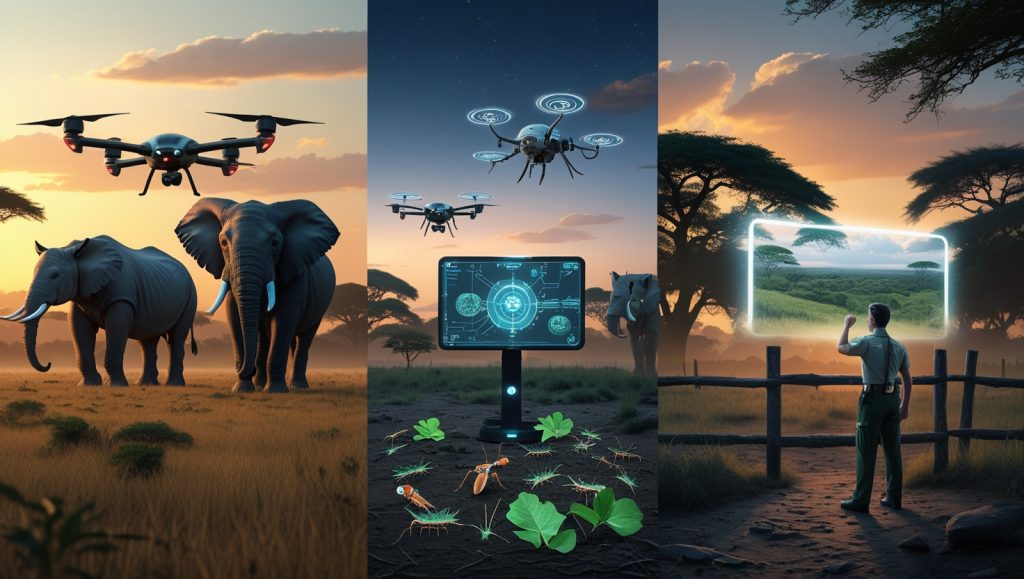
The Charismatic Species Bias
Robotic Zookeepers often prioritize mammals and birds over insects or plants. For instance, while drones monitor rhinos in Kenya, Australia’s critically endangered Lord Howe Island stick insect receives scant attention. “Conservation tech follows funding, not ecological urgency,” notes Dr. Jane Smart of the IUCN. Efforts like Biohybrid Insect Technology: 2025’s Unstoppable Force Reshaping Environmental Innovation aim to shift focus to insects, but progress lags.
Access Inequality
High costs limit Robotic Zookeepers to wealthy nations. A single surveillance drone costs ~$15,000—more than the annual budget of many African parks. Initiatives like the WildTech Alliance aim to democratize access through grants, but progress is slow.
The “Natural” Paradox
Purists argue that Robotic Zookeepers undermine wilderness preservation. Conversely, technologists like Ben Lamm, CEO of Colossal, counter: “We broke nature; we have to fix it. Ethics can’t be an excuse for inaction.” This tension is central to Why Robotics Is the Secret Weapon in the Fight Against Climate Change, which explores how robotics drives environmental solutions.
The Future: 2030 and Beyond
By 2030, experts anticipate:
- Self-Healing Ecosystems: AI algorithms will design habitats optimized for biodiversity, using Robotic Zookeepers to plant seeds and remove invasives.
- Global DNA Vaults: Biobanks will store genetic material for all endangered species, enabling large-scale de-extinction.
- Robot-Human Hybrid Teams: Rangers will use AR glasses to receive real-time data from Robotic Zookeepers, streamlining anti-poaching efforts.
FAQs: Your Top Questions Answered
Are Robotic Zookeepers cost-effective?
Initial costs are high, but long-term savings are significant. For example, Kenya’s drone patrols reduced poaching-related losses by $2.3 million annually.
Do Robotic Zookeepers harm animal behavior?
Studies show minimal impact when designed thoughtfully. WildDrone’s “calm drones” caused no stress in 92% of observed giraffes.
How can I support these efforts?
Donate to NGOs like the Wildlife Conservation Society or the World Wildlife Fund’s Technology for Conservation initiative to advocate for policy changes prioritizing tech equity
Will Robotic Zookeepers replace human jobs?
Unlikely. The World Economic Forum estimates conservation tech will create 12 million new jobs by 2030, from AI trainers to drone operators.
A Call to Action
The biodiversity crisis demands bold solutions—and Robotic Zookeepers are proving their worth. But technology alone isn’t enough. We need policies that prioritize equitable access, funding for underrepresented species, and public engagement to build a planetary conservation ethic.
Your Next Steps:
- Subscribe to our newsletter for monthly updates on conservation tech.
